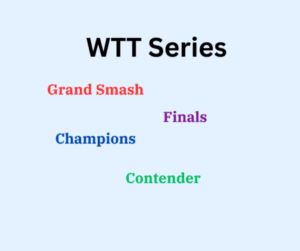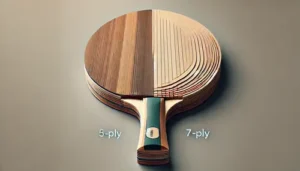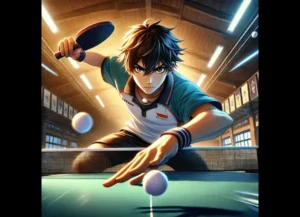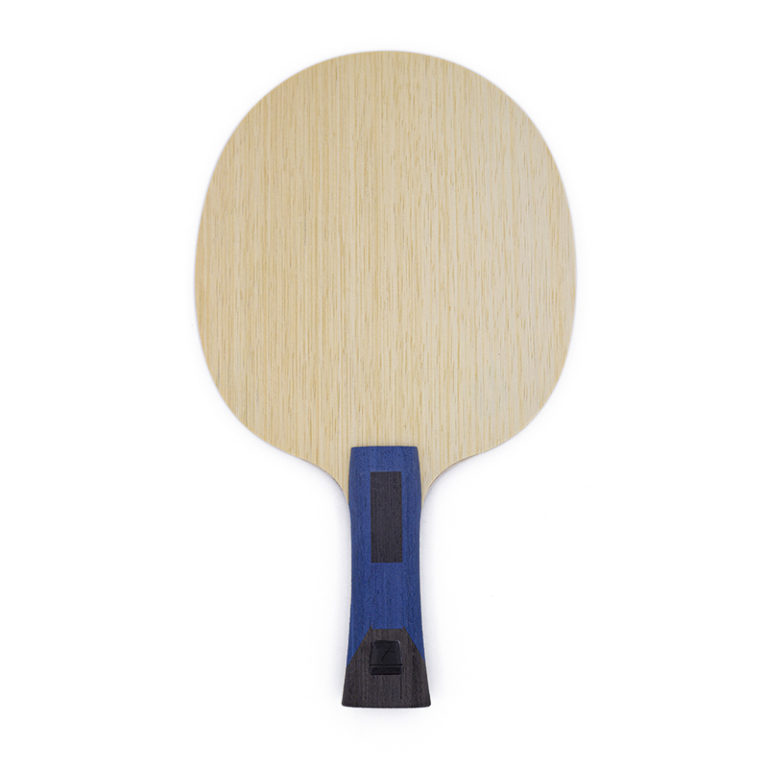In table tennis, the combination of rubber and racket type plays a crucial role in determining a player’s playing style. The rubber on the racket, especially the type of rubber on both sides (forehand and backhand), can influence various aspects of the game, including spin, speed, control, and overall playing strategy. Here’s a a comprehensive table tennis rubber guide.
Types of table tennis rubbers
• Smooth Rubber: This type of rubber is commonly used for both forehand and backhand. It allows for a balanced mix of spin, speed, and control. Players using smooth rubber on both sides usually have a well-rounded playing style and can adapt to various situations on the table.
• Pips-Out Rubber: Pips-out rubber has shorter and stiffer rubber pimples. It provides less spin but more control and can be effective for quick attacking shots close to the table. Players using pips-out rubber may focus on aggressive, close-to-the-table play.
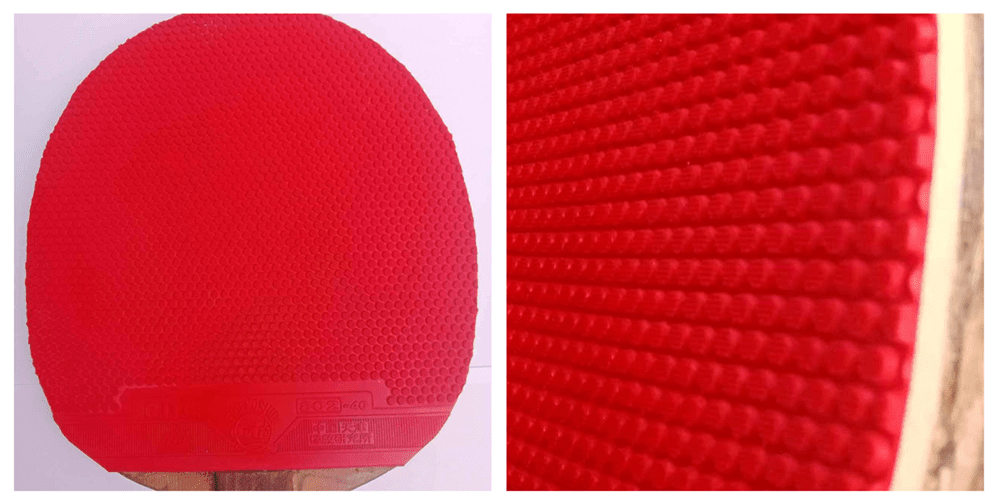
With Pips-out, the pimples’ facing outwards
• Pips-In Rubber: Pips-in rubber has longer and more flexible rubber pimples. It generates more spin, making it suitable for players who rely on spin-oriented shots. This type of rubber is commonly used for both forehand and backhand by players who favor a spin-centric playing style.
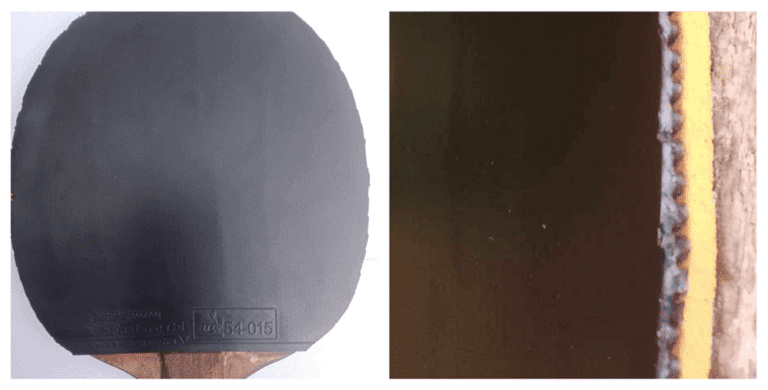
With Pips-in, the pimples’ facing inwards
Sponge hardness and rubber thickness guide
• Sponge Hardness: A softer sponge absorbs more of the incoming energy, providing better control and touch. On the other hand, a harder sponge generates more speed and power. Players with a power-oriented playing style may opt for harder sponges, while those focusing on control may prefer softer ones.
• Thickness: Thicker sponges generally provide more speed and power, while thinner sponges offer better control. Players who prefer a faster game may opt for thicker sponges, while those who prioritize control may choose thinner ones.
How to choose table tennis rubbers
The rubber type, sponge hardness, and rubber thickness you will choose depends on the playing style you want to develop or master.
• Attacking Style: Players who use rubbers with high speed, spin, and a combination of attacking sponge thickness tend to play aggressively. They focus on powerful shots, quick attacks, and finishing points.
• Defensive Style: Players using rubbers with good control, moderate speed, and spin often adopt a defensive playing style. They may stay away from the table, relying on precise placement, counterattacks, and defensive shots to wear down their opponents.
• All-Around Style: Players with a balanced combination of speed, spin, and control can adapt to various playing styles. They may mix offensive and defensive strategies based on the situation.
Conclusion
In conclusion, the choice of rubber and racket type is highly individual and depends on a player’s preferences, strengths, and playing style. Experimenting with different combinations allows players to find the setup that best suits their game.
Do you have comments to this post? Feel free to share in the comment section below.

About the Author: Grant is a certified table tennis enthusiast who regularly plays at the Metro Cebu Table tennis league. He uses inverted rubber on his forehand side and medium pimples on his backhand side. His playing style is counter-attacking slow spinny loop balls with his forehand drive and backhand punching with his backhand using medium pips rubber. His goal is to play table tennis for health reasons and wants to inspire anyone who wants to learn the sport that anything is possible as long as you put your heart into it.


